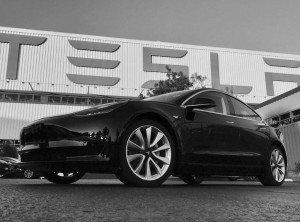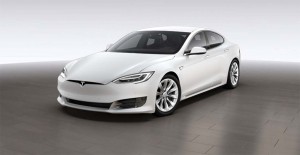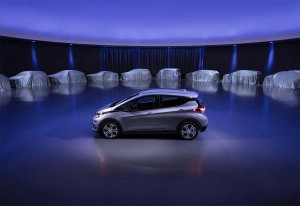
Even when it wins, it loses. Tesla just passed the 200,000 vehicle mark, the most ever by an EV maker, but that brings to an end the tax credit.
Tesla is not just the country’s best-selling EV maker, but the first to sell more than 200,000 electric vehicles in the U.S. market. But that might not necessarily give the carmaker reason to celebrate.
Under guidelines set up by the Obama Administration and retained by Congress as part of last year’s tax overhaul, federal tax credits of up to $7,500 per vehicle apply only on the first 200,000 battery vehicles sold by an individual manufacturer. After that they begin to phase out, meaning that Tesla could be at a financial disadvantage once the company loses the incentives entirely by the end of next year.
Other companies, including General Motors, Nissan and Ford, are approaching the threshold but their buyers will likely continue to receive some incentives well into 2020, barring any move by Congress – something considered unlikely – to extend the tax credits.
Tesla confirmed it had hit the 200,000 mark on Thursday, a figure that refers only to vehicles actually delivered to customers in the United States. The current incentive program provides a maximum $7,500 in federal tax credits, the precise amount based on the size of a vehicle’s battery pack.
(Tesla celebrates milestone as weekly production tops 5,000. Click Here for the story.)

The loss of the tax credits may not hurt Tesla right away as many of its buyers are early adopters, say some observers.
Once the threshold is reached, the $7,500 cap remains in place for anyone taking delivery of that manufacturer’s products for up to the next two quarters – through the end of 2018, in Tesla’s case. Then, for the first half of 2019 Tesla buyers will see the incentive cut in half, to $3,750. For the next two quarters, July 1 through Dec. 31, 2019, customers will receive just a quarter of the original credit, $1,850, before the automaker’s incentives would dry up.
“It does affect affordability,” said Stephanie Brinley, a senior analyst with IHS Automotive, especially on the first generation of relatively low-end battery-electric vehicles, such as the Tesla Model 3, Chevrolet Bolt and Nissan Leaf. But Brinley adds that the impact may not be immediate, as many of today’s buyers are “early adopters,” less worried about pricing.
The real concern, for a manufacturer, is the potential price disadvantage the lack of a tax credit could mean as more mainstream buyers enter the EV market.
Tesla sales have grown substantially during the last several years, the automaker producing about 100,000 vehicles in 2017. The majority of those were earmarked for the U.S., though Tesla has a substantial market in China and Europe. This year, after a painfully slow start-up of Model 3 production, it claims to now be rolling out over 5,000 vehicles a week.
(Tesla whistleblower claims automaker lying about production numbers and safety issues. Click Here for more.)
But production of electrified vehicles, especially plug-in hybrids and pure battery-electric models, has been growing overall. GM last week said demand has “outstripped production” for the Chevrolet Bolt EV, and that it will increase output by 20% during the fourth quarter. While many of those Bolts will be shipped abroad, notably to Canada and South Korea, the Detroit automaker is expected also to hit the 200,000 sales threshold sometime late this year or, at the latest, early 2019.
For a base, $36,620 version of the Chevy electric vehicle, or $35,000 Model 3, a $7,500 tax credit effectively amounts to a more than 20% discount, a significant factor for consumers trying to justify the normally higher cost for battery vehicles like the Bolt.
That’s one reason why GM CEO Mary Barra has called on Congress to extend the EV incentives. Few expect to see that happen at this time, though lawmakers delivered a surprise when they continued to include the tax credits in the federal tax bill passed into law last December.

GM CEO Mary Barra has been pushing Congress to extend the $7,500 federal tax credit for electric vehicles.
Proponents of electrification believe that incentives will remain necessary at least through the middle of the coming decade. That’s about when the Boston Consulting Group forecasts battery prices will drop low enough that electric and conventional, gas-powered vehicles will begin to achieve price parity.
At the beginning of this decade, a kilowatt-hour of battery cells cost about $1,000. That’s down to around $150, according to many industry planners interviewed by TheDetroitBureau.com. For a model like a base Tesla Model 3, which uses 60 kWh of batteries, the difference would add up to more than $50,000 per vehicle
BCG expects the figure to drop to $70 over the next five years and many anticipate a further drop, if and when next-generation solid-state batteries can be brought to market.
Pricing is just one of the challenges for the battery-car market, however. Automakers are also trying to stretch range while also shortening charge times. With dozens of long-range models due to debut by the beginning of the next decade, sales are expected to surge.
Sales of plug-based models just nudged 200,000 in the U.S. last year, but demand is expected to reach 284,795 this year, according to a forecast by IHS Markit, and break into seven figures by early in the new decade, the research firm predicting demand of 1.125 million by 2022.
(GM increasing Bolt production, according to its sustainability report. Click Here for the story.)


Interesting to note that the limit is a number of vehicles followed by a limit time frame. No matter how long it takes, you have until 200,000 units until the time factor starts. Once it starts, you can build a billion cars a day and still have the same credit for the next two quarters, then the next two quarters, then the next…
Great post. Teslas are amazing and they are efficient cars. Kudos to you for posting this.
Thank you Sandy. But do remember that the credits apply to all manufactured electric vehicles, so Nissan, Chevrolet, Jaguar, and all of the other 50 electric vehicle manufacturers will have the same advantage.